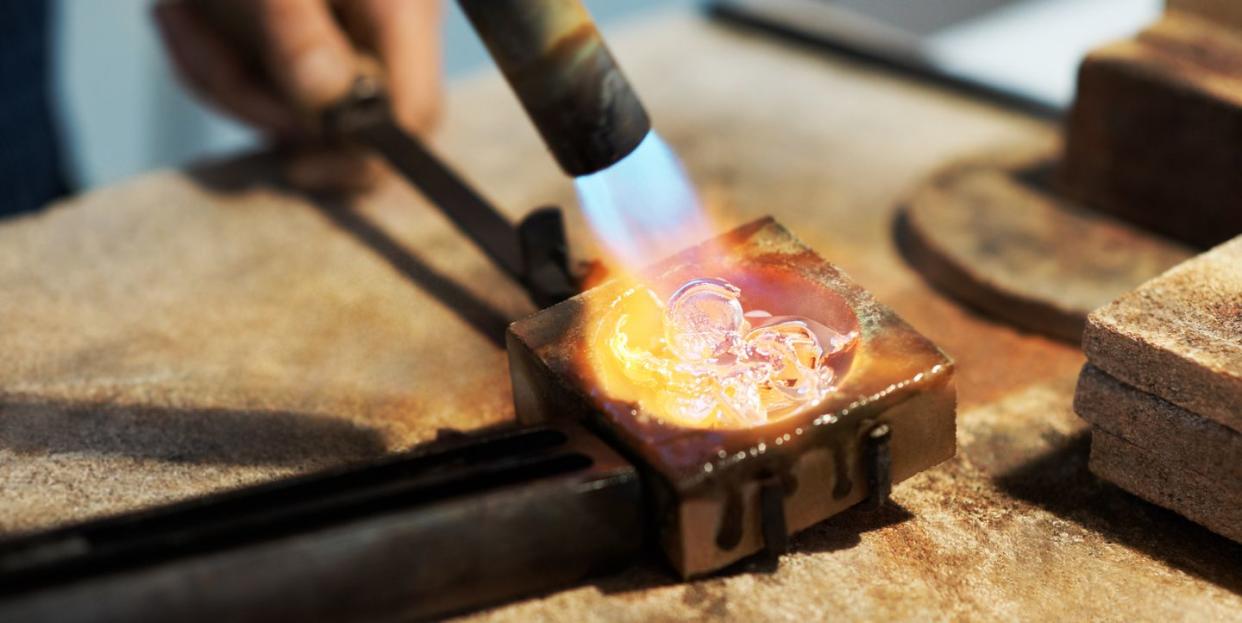New Material Finally Makes It Into the Almighty Nuclear Code

For the first time in 30 years, there's a new high-temperature nuclear plant material.
Tech like the molten salt reactor requires much higher temperature tolerance and special construction.
The new material is an advanced alloy with extremely high creep strength.
Scientists working at Idaho National Laboratory (INL) have announced the approval of a new high-temperature metal after 12 years and a $15 million Department of Energy investment. Alloy 617, a “combination of nickel, chromium, cobalt and molybdenum,” is tolerant and strong at temperatures of more than 1,700 degrees Fahrenheit. The scientists say this means it could be used in existing high temperature nuclear facilities as well as cutting-edge applications like molten salt reactors.
For any new nuclear plant material, making the American Society of Mechanical Engineers (ASME) Boiler and Pressure Vessel Code is like qualifying for the Olympics. Alloy 617 is the first new material to get into “The Code” in 30 years. And unlike the crowded field of materials for light water nuclear reactors, high-temperature reactors have very few options.
“In contrast to light water plants, the commercial fleet, where you might have 50 or 100 materials that you could use, there were exactly five you could use for high-temperature reactors,” INL project lead Richard Wright said in a statement.
Because of that, nuclear researchers and insiders have watched Alloy 617 with keen interest and crafted spinoffs that are even stronger.
In a 2017 issue of Materials for Ultra-Supercritical and Advanced Ultra-Supercritical Power Plants, metals scientist Jutta Klöwer explained qualities of some derivatives of Alloy 617, Alloy 617B and Alloy 617occ, which have “additions of boron and narrowly tolerated alloying elements” in order to boost stats on stress relaxation and creep rupture.
Despite sounding like an oxymoron, stress relaxation is a way that materials redistribute internal forces in order to cope with strain. But when changing or extreme temperatures are in play, stress relaxation can cause cracks.
Creep rupture is similar. In general, creep is how metals and other materials move and eventually deform over time. If the material bends or breaks altogether, that’s yielding, not creep; if it just melts at high temperature, that’s ... melting. But creep can happen in both situations before the material would yield or melt.
Engineers Edge explains:
“At room temperature, structural materials develop the full strain they will exhibit as soon as a load is applied. This is not necessarily the case at high temperatures (for example, stainless steel above 1000 [degrees Fahrenheit] or zircaloy above 500 [degrees Fahrenheit]). At elevated temperatures and constant stress or load, many materials continue to deform at a slow rate. This behavior is called creep.”
For a technology like molten salt, where even getting the reactor up to the proper temperature takes a long time, tolerant materials are absolutely critical. What good is reactive molten salt if the vessel melts or deforms? Increasing the catalog by 20 percent gives researchers new options and ideas as they continue to prototype these new high-temperature plants.
Around the corner, that could also mean better materials for extremely high-temperature nuclear fusion reactors.
You Might Also Like

